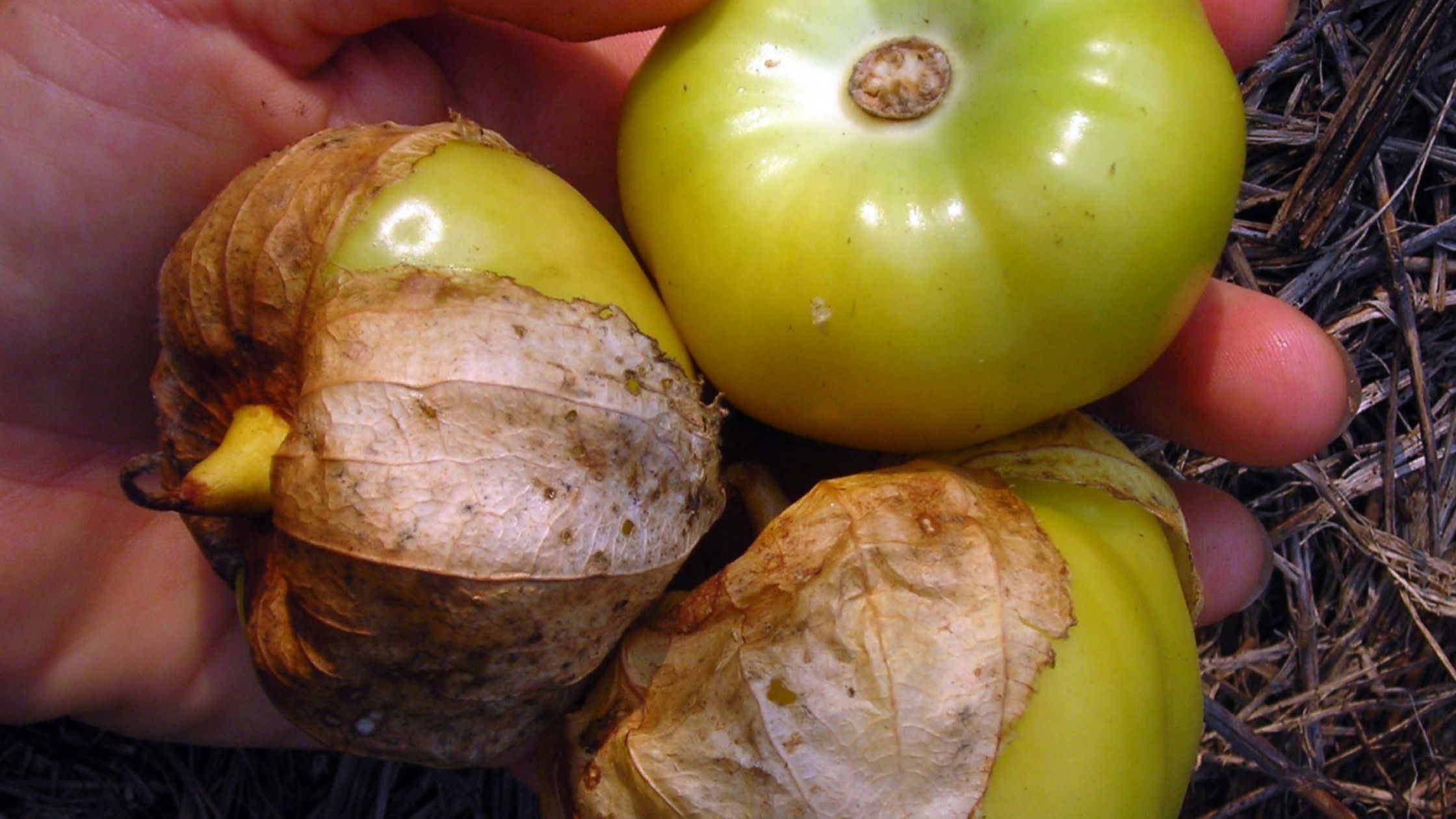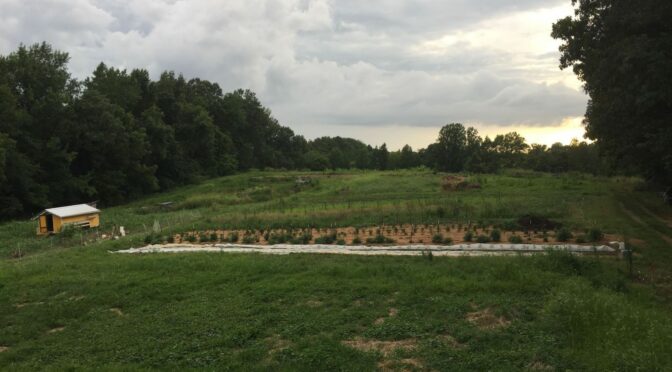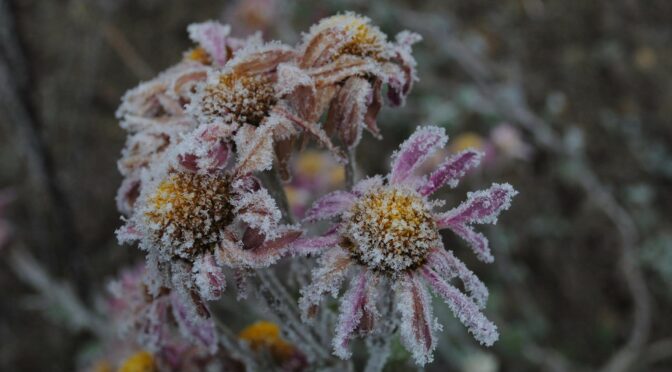Gardeners rarely begin their journey with a plot of perfect soil, but it’s something we all dream about. In the Southeast, many gardeners have to work with heavy clay soils. While clay soil is rich in minerals and many nutrients, it’s prone to compaction, doesn’t drain well in wet weather, and doesn’t hold water well during droughts. Growing certain root crops like large carrot varieties can be especially tough.
Clay soils are a great foundation to improve on. Here are a few organic methods to improve your heavy clay soil.
Practice No-Till (or minimal-till) Agriculture
It may sound counterintuitive, but tilling can make clay soils worse. Tilling increases soil compaction and kills beneficial fungi and micro-organisms.
Cover Crops
Cover crops add nutrients and organic matter to the soil. Great choices for improving clay soils include buckwheat, clover, and wheat. Clover has the benefit of being a nitrogen-fixing legume, meaning that through a symbiotic relationship with bacteria, it captures nitrogen from the air and adds it to the soil.
You may also want to mix in large or deep-rooted cover crops like daikon radishes, lava beans, and alfalfa. These crops help break up compacted soil and create channels for air and water as their roots decompose.
Chop & Drop
You can also use a method commonly used by permaculturalists called “chop and drop.” This method involves growing crops like comfrey, pigeon peas, moringa, sun hemp, and sorghum. These crops are chopped and dropped on the soil to decompose. Comfrey is a popular choice for this in perennial gardens and fruit tree guilds.
Broadfork
Broadforking your soil is a great way to loosen soil without disturbing the layers or structure. It helps mitigate compaction and preserve beneficial organisms and fungi in the soil.
Create Permanent Beds
Even just walking on your garden soil can cause severe compaction. Creating permanent beds that you don’t till, step on, or use machinery will help make light, fluffy soil.
Use Terraces or Swales
If your property has heavy clay soil and a slope, you’ll probably deal with water issues. Planting in rows or terraces that are perpendicular to the slope of the land will help slow down the water in your garden and reduce erosion issues. Swales built on contours take this further and are a great way to catch large amounts of rainwater, allowing your plants to access it slowly, even on significant slopes.
Spread Compost
Finished compost is the quickest way to beef up the organic matter in your soil. Adding a couple of inches of compost to each bed adds nutrients, improves water retention and drainage, and lightens the soil.
Use Mulch
Mulch helps block weeds, hold moisture, and keep soil temperatures cool. It also adds a lot of organic matter to your soil as it decomposes. Any organic mulch can help improve your clay soils, including straw, leaves, grass clippings, woodchips, and hay. Keep in mind that hay tends to have a lot of weed seeds.
Grow Varieties Adapted to Heavy Clay Soils
Improving clay soils isn’t something that happens overnight, especially in large gardens. If you’re planting in a garden with heavy clay soils this year, try some varieties that are adapted to these conditions.
- Chantey Red Core Carrots
This blocky, broad-shouldered variety with a blunt tip is well-suited to growing in clay. It was introduced from France in the 1800s. - Danvers 126 Carrots
These carrots taper to a blunt point and are especially suited to growing in clay soil. The strong tops aid harvesting. - Everona Large Green Tomatillo
These plants produce large, tasty tomatillos and thrive even in heavy clay soil and drought. Seed collected by Barbara Rosholdt from tomatillos planted by Mexican workers at the Everona sheep dairy near Unionville, VA. Introduced in 2008 by SESE. - McCormack’s Blue Dent
This beautiful dent corn makes delicious light blue flour and is especially suited to the eastern U.S., clay soils, and drought-prone areas. Introduced in 1994 by SESE. Bred by Dr. Jeff McCormack from a cross between Hickory King and an unnamed heirloom blue dent. - Oxheart Carrots
A good carrot choice for shallow or heavy clay soils that most carrots don’t like. Dating to 1884, this variety produces thick, sweet “oxheart”-shaped carrots, 5-6 in. long and 3-4 in. wide, weighing up to a pound! - Pike Muskmelon
Bred specially for growing in unirrigated clay soil, this vigorous melon has outstanding flavor and good disease-resistant. Introduced in 1935, Aaron Pike of Pike & Young Seeds; seedstock supplied to SESE by Aaron Pike’s niece. - Tennessee Red Valencia Peanuts
This pre-1930 produces rich, sweet peanuts with red skins. It’s easy to grow without hilling, even in clay soils. - Texas Gourdseed Corn
Originally brought to south Texas by German farmers who migrated from Appalachia during the late 19th century, this variety withstands drought and does well in clay soil. In south Texas, this is considered to be the best choice for tortilla flour. - Turga Parsnip
This Hungarian heirloom produces short, stout roots that are good for heavy clay soils. - Southern Peas (Cowpeas)
These productive peas are well-adapted to poor soils and drought. We carry 16 varieties at SESE.


